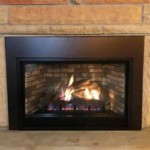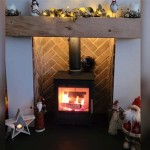Electric Fireplace Hearth Ideas: Enhancing Ambiance and Functionality
An electric fireplace offers a convenient and aesthetically pleasing alternative to traditional wood-burning fireplaces. Free from the constraints of chimney requirements and fuel sourcing, electric fireplaces can be incorporated into various spaces within a home. A crucial element in integrating an electric fireplace seamlessly into a room's design is the hearth. The hearth serves not only as a visual anchor but also as a functional transition point between the fireplace unit and the surrounding floor. Successfully designing an electric fireplace hearth requires careful consideration of materials, dimensions, and overall aesthetic coherence.
Material Selection for Optimal Aesthetics and Durability
The selection of materials for an electric fireplace hearth significantly impacts both its visual appeal and its longevity. Several factors influence this decision, including the desired style, the existing décor of the room, and the budget allocated for the project. Common materials include stone, brick, tile, wood, and manufactured veneer. Each material offers distinct advantages and considerations.
Stone, such as granite, marble, or slate, offers a durable and elegant option. These materials are heat resistant, although this is less critical for electric fireplaces than their wood-burning counterparts, and provide a timeless aesthetic. Granite, known for its durability and varied patterns, can withstand heavy use and maintain its appearance for years. Marble exudes sophistication and can elevate the overall design. Slate offers a more rustic and textured look, blending well with natural or contemporary designs. However, natural stone can be more expensive than other options and may require professional installation due to its weight and cutting requirements.
Brick provides a classic and charming option, particularly well-suited for traditional or farmhouse-style homes. Brick is relatively inexpensive and offers good heat resistance, although this feature is less critical with electric fireplaces. Brick can be painted or stained to coordinate with the room's color scheme, providing further customization options. However, brick can be porous and may require sealing to protect it from moisture and staining.
Tile offers a versatile and customizable option for electric fireplace hearths. Ceramic, porcelain, and glass tiles are available in a wide range of colors, patterns, and sizes, allowing for intricate designs and personalized aesthetics. Tile is durable, easy to clean, and relatively inexpensive. Installation can be a DIY project for those with experience, although professional installation is recommended for complex designs or larger areas.
Wood, while requiring careful consideration due to heat concerns, can be used effectively in electric fireplace hearths, particularly when the fireplace unit is designed with adequate heat shielding. Wood adds warmth and character to a space, complementing rustic or contemporary designs. However, untreated wood is flammable and can be damaged by moisture. Therefore, it is essential to use treated wood or to incorporate a non-combustible barrier between the fireplace unit and the wood hearth. Consider using reclaimed wood for added character and sustainability. Careful maintenance is required to prevent warping, cracking, or discoloration.
Manufactured veneer, such as faux stone or brick, provides a cost-effective alternative to natural materials. Veneer offers the aesthetic appeal of natural stone or brick at a fraction of the cost. It is lightweight, easy to install, and available in a variety of styles. While not as durable as natural stone or brick, veneer is a good option for those on a budget or looking for a low-maintenance solution.
Dimensional Considerations for Safety and Proportionality
Proper dimensions are crucial for both the safety and the aesthetic appeal of an electric fireplace hearth. The hearth's size should be proportional to the fireplace unit and the surrounding room. Overly small hearths can appear visually unbalanced, while overly large hearths can overwhelm the space. Generally, the hearth should extend beyond the fireplace unit on all sides, providing a visual buffer and protecting the surrounding floor from potential heat or debris, though electric fireplaces produce minimal heat output compared to wood burning ones.
The depth of the hearth, measured from the front of the fireplace unit to the edge of the hearth, is a critical consideration. A sufficient depth provides a safe zone around the fireplace, preventing accidental contact with the unit and offering a place to display decorative items. A minimum depth of 12 inches is generally recommended, although the specific dimension may vary depending on the size and design of the fireplace. For larger rooms or larger fireplace units, a deeper hearth may be more visually appropriate.
The width of the hearth, measured from side to side, should also be proportional to the fireplace unit. The hearth should extend beyond the sides of the fireplace unit, creating a balanced and visually appealing focal point. A minimum extension of 6 inches on each side is generally recommended. In smaller rooms, a flush hearth, integrated directly into the wall, can save space while still providing visual definition.
The height of the hearth above the floor can vary depending on the desired aesthetic and the overall design of the room. A raised hearth, elevated several inches above the floor, can create a more dramatic focal point and add visual interest. A flush hearth, level with the floor, provides a seamless transition and is particularly well-suited for modern or minimalist designs. When choosing the height, consider the existing architectural elements of the room, such as baseboards and trim, to ensure a cohesive design.
Integrating Functionality and Aesthetics
Beyond its visual appeal, an electric fireplace hearth can also serve functional purposes. Incorporating storage solutions, seating areas, or display surfaces can enhance the usability of the space and create a more inviting atmosphere.
Built-in storage, such as cabinets or drawers, can provide a convenient place to store fireplace accessories, such as remote controls or decorative items. Storage can also be used to conceal cords or other unsightly elements, creating a cleaner and more organized appearance. Consider incorporating open shelving to display books, plants, or artwork, adding personality and visual interest to the hearth.
A hearth can be designed to incorporate seating areas, providing a cozy and inviting space for relaxation. A wide, flat hearth can serve as a bench, perfect for reading or relaxing by the fire. Adding cushions or pillows can enhance comfort and create a more inviting atmosphere. Alternatively, consider incorporating built-in benches on either side of the fireplace, providing dedicated seating areas for family and friends. The seating area should be proportional to the size of the room and the fireplace, ensuring a balanced and comfortable space.
The hearth's surface can serve as a display area for decorative items, such as candles, vases, or artwork. This allows you to personalize the space and reflect your individual style. Arrange items in a balanced and visually appealing manner, avoiding clutter or overwhelming the space. Consider incorporating a variety of textures and materials to add visual interest. Change the display seasonally to keep the space fresh and inviting.

ᑕ❶ᑐ How To Build An Electric Fireplace Surround Diy Ideas
6 Electric Fireplace Diys You Ll Want To Recreate Asap Heat Glo

180 Best Electric Fireplaces Ideas Fireplace Wood

Electric Fireplace Ideas Photos Houzz

Recessed Or Wall Mount Electric Fireplace Installations Explained Touchstone Home S Inc

40 Best Fireplace Décor Ideas Mantel

Diy Electric Fireplace Jenna Sue Design

Pin By Mice Stokes On Flip Or Flop Living Room Decor Fireplace Tv Wall Build A

19 Stylish Yet Practical Electric Fireplace Ideas With Tv Above

Diy Electric Fireplace Jenna Sue Design
Related Posts








